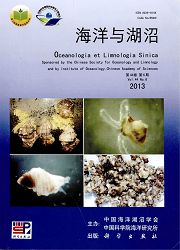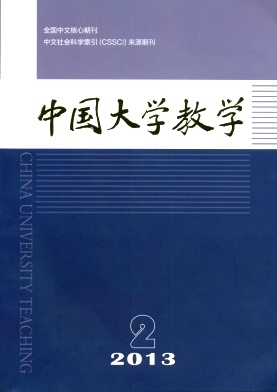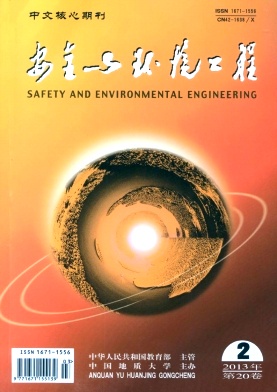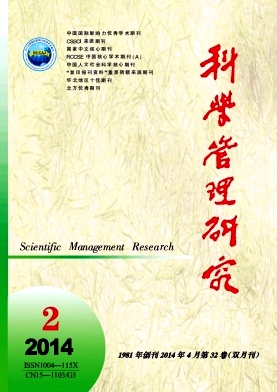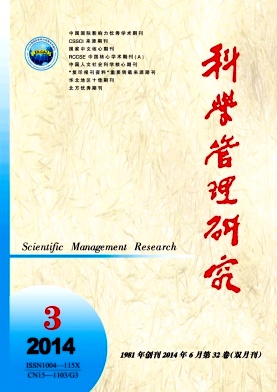临床惯性在慢性病管理中的影响及药师克服临床惯性的方法
摘 要:
目的:本文综述了临床惯性的定义和影响因素,根据实际情况提出了药师克服临床惯性的诸多建议,为临床药师参与慢病管理提供指导和参考。方法:我院门诊药师应用“药物治疗管理”服务模式,对2019年6-8月接收的200名高血压病患者,分析探讨临床惯性的影响及药师克服的方法。结果:在初诊的200名患者中血压达标率为60%,存在临床惯性现象的患者共60人,由于药师的干预,复诊患者减少了40人,血压达标率上升到90%。结论:临床惯性在慢病管理中普遍存在,药师参与慢病管理可以有效地克服临床惯性。
关键词:
临床惯性 高血压病 慢病管理 临床药师
作者简介:李远,硕士,主管药师;研究方向:临床药学;
作者简介:*葛卫红,硕士研究生导师,主任药师;研究方向:临床药学;
The Influence of Clinical Inertia in the Management of Chronic Diseases and the Methods by Pharmacists of Overcoming It
Li Yuan Wu Qiuhui Yan Simin Ge Weihong
Pharmacy Department,Nanjing Drum Tower Hospital;
Abstract:
Objective: The author reviews the definition and influencing factors of clinical inertia, and puts forward many suggestions for pharmacists to overcome clinical inertia according to the actual situation, and provides guidance and references for clinical pharmacists to participate in chronic disease management. Methods: The outpatient pharmacists of our hospital applied the service mode of "drug treatment management" to serve 200 patients with hypertension from June to August, 2019, and the influence of clinical inertia and the methods for pharmacists to overcome it are analyzed. Results: Among the 200 newly diagnosed patients, the compliance rate of blood pressure was 60%, and a total of 60 patients had clinical inertia. Due to the intervention of pharmacists, the number of follow-up patients decreased by 40, and the compliance rate increased to 90%. Conclusion: Clinical inertia is common in chronic disease management. Pharmacists who participate in chronic disease management will effectively overcome clinical inertia.
Keyword:
clinical inertia; hypertension; chronic disease management; clinical pharmacists;
Received: 2019年9月11日
高血压病是一种病因复杂的慢性疾病,患者往往需要长期持续的治疗和护理。高血压病的管理目标是血压的控制和心血管疾病风险的管控。近年来,高血压病的治疗方法有了很大进展,但2015年的调查[1]显示,国内18岁以上人群高血压的知晓率、治疗率、控制率分别为51.6%、46.8%和16.8%,与发达国家比较差距明显[2]。
在慢病管理中,影响血压控制的因素有很多[3-5],其中包括患者的生活习惯,用药依从性和临床惯性。在过去十多年的研究中,临床惯性被认为与无效的药物治疗相关[6],从而增加患者心血管疾病的风险。2013年ESH/ESC动脉高血压指南强调临床需要设法解决临床惯性对于血压控制的影响[7]。Manuel等[8]人在哥伦比亚治疗了7076名高血压患者,发现血压控制率在81.7%,在其余血压控制不佳的患者中,因为临床惯性的原因占到了81.8%。一项纳入46000多名高血压病患者的META分析[9]发现约87%的患者遇到过临床惯性。
1 临床惯性的定义
临床惯性的概念首次被philips等[10]人于2001年正式提出,是指当治疗目标仍未实现时,医生未能及时开始新的药物治疗或增加现有药物的剂量。临床惯性通常被认为是临床医生的一种行为,因为其常常独立于其他因素(例如药物依从性)。Berlowitz等[11]人跟踪了新英格兰五家医院的男性高血压患者2年时间,其中40%的患者血压控制不佳,尽管平均每个患者每年有6次以上的高血压相关医生就诊记录,但仅6.7%的患者在就诊期间接受了强化治疗,血压控制不佳的原因不能归咎于用药依从性,而是临床惯性。
2 导致高血压病管理中临床惯性的因素
临床惯性产生的因素中,与临床医生相关的影响程度约占50%[12],与患者相关的影响程度约占30%[13],与系统相关的影响程度约占20%[14]。
2.1 临床医生相关因素
医生对患者的诊疗时间不足,担心不良反应的增加,高血压病作为患者的共病之一被忽视,对于疾病诊疗指南里的内容存在疑虑而不执行等,都会导致医生在患者血压不达标的情况下没有及时的调整治疗方案。例如,同时患有糖尿病或者肾脏功能不全的高血压患者,血压控制需要更加严格,但是,随着肾脏功能的下降,提高了降压药物的治疗要求,会导致临床惯性的产生[15]。另外,高血压病的指南定期更新,而医生对于高血压防治指南的认识不足,并且,从指南的更新发布到最后影响到医生的诊疗行为可能需要5~10年的时间[16],可能会导致临床惯性的产生。
2.2 患者相关因素
患者的年龄、职业、受教育程度等因素常常与临床惯性的发生相关[13]。由于高血压病常常没有症状,患者会低估了高血压病的危害;患者收入低下,无法负担起长期的药物治疗;或曾有过严重药物不良反应史;生活习惯不够健康等都会影响到医生的诊疗行为。
2.3 系统相关因素
系统相关因素包括护理团队、随访计划和团队成员间工作模式。缺少护理团队的协助,缺乏随访计划,团队成员之间或者医生患者之间的沟通不佳,这些都会成为成功的慢病管理的阻碍[17]。多项研究[18-19]显示医生和患者在诊疗过程当中有必要进行不断沟通并且对于治疗目标达成一致。
3 临床惯性在门诊临床药师慢病管理工作中的影响及药师克服的方法
3.1 临床惯性在我院门诊临床药师慢病管理工作中的影响
我院门诊临床药师应用药物治疗管理的模式,从收集患者信息、药物治疗相关问题的评估、药物治疗行动计划的制定、干预和随访等5个核心要素,对2019年6-8月接收的200名门诊高血压病患者进行慢病管理。200名患者平均年龄为61.2岁,男性102人,占51%,女性98人,占49%,平均体重指数(Body Mass Index,BMI)为22.2(kg·m-2),初次就诊于药学门诊的血压平均为收缩压为132.2 mmHg,舒张压为77.6 mmHg,血压达标人数为120人,不达标为80人;血压达标率60%。临床药师干预一个月后随访,从初诊60人次出现临床惯性下降为20人,血压达标率上升到90%。
3.2 我院临床药师在慢病管理中克服临床惯性的方法
高血压病管理中,临床药师必须尽早检测出患者的血压值,以避免疾病的进展;其次,需要根据每个个体所处的阶段,实施不同的治疗和生活方式干预。药师根据各种临床指标和心血管病风险评估来评估个体化治疗目标和策略,并制定完备的监护计划,定期跟踪随访。
临床惯性会出现在慢病管理中的每一个环节,例如诊断、治疗、监护等[20],药师只有深度参与慢病管理中,才能有效地克服临床惯性的产生。
3.2.1 建立药师为主导的慢病管理团队
美国社区预防服务特别工作组建议建立以团队为基础的护理,强调了团队中药师的作用,以此改善血压控制现状[21]。药师的单独干预或与其他医疗专业人员合作干预都能改善了血压管理状况[22]。我院临床药师建立以药师为主体的慢病管理团队,药师干预为主包括患者教育、对医生的反馈和药品处方审核。药师的实践提示更多的预防治疗慢性病护理服务被委托给团队成员,会使得医疗服务变得更加高效。
3.2.2 定期进行针对医生的用药培训
高血压病的治疗药物有五大类,种类繁多,药理复杂。全科医生有时会不熟悉药物使用方法。国内学者调研不同基层医疗服务机构的高血压病相关处方,均发现了不同比例的不合格处方[23-25]。另外,西班牙Isaza等[26]人的研究表明患者单一用药比例的减少与血压控制率上升有关。所以我院临床药师定期开展新药介绍,合理用药培训,执行处方审核制度,规范医生的处方行为。
3.2.3 制定随访计划并定期进行针对患者的疾病教育
高血压患者首次就诊结束以后,医生通常需要2~3年的时间来加强对其心血管危险因素的治疗,同时,随访的强度和治疗应与每位患者的心血管风险成正比[27]。实践证明,药师利用药物治疗管理[28](Medication Therapy Management)对高血压病患者进行管理,制定个体化监护随访计划,可以有效减少药物治疗问题。高血压病往往无法引起患者足够的重视,因此,对于患者的疾病教育尤为重要,树立正确的疾病观有助于血压的长期控制。基层医疗服务机构对患者的健康教育可以有效提高患者对高血压病知晓率、治疗率、控制率,使血压保持在合理水平[29]。因此,我院临床药师实践中为每个患者制定个体化随访计划,定期开展患教会,以此提高患者的疾病知识和疾病自我管理的能力。
3.2.4 药师利用科技技术进行远程监控
近年来,移动互联网信息技术的高速发展,为药师参与慢病管理提供了新的契机。国内外移动互联网技术的应用[30-33]证明了其可以提高药师参与慢病管理的程度和效率,改善患者血压控制的情况,节约了慢病管理的成本。在Kronisch[34]的研究中,利用电子共享测量血压技术的干预组临床惯性的占比为31%,低于对照组的66%。护理团队对高血压患者进行远程会诊,可能延长两次患者门诊就诊的间隔时间,从而减少临床惯性的产生[35]。我院临床药师利用移动互联网技术根据患者的在家测量的血压值,及时的远程干预其生活方式和治疗方案,最后患者可以填写生活质量量表将结果反馈给药师的移动终端,有效地形成双向互动。
4 结论
临床惯性的现象普遍存在,在不同的慢病管理和高绩效水平的医疗系统[36](血压控制率达到80%以上的医疗系统)中都发现了这一现象。一项针对240名对糖尿病患者的分析发现,平均糖化血红蛋白为70.78 mmoL·moL-1,而平均目标为56.15 mmoL·moL-1,其中22.1%的患者表现出临床惯性[37]。1990-2012年,对英国105477名患者进行的回顾性研究发现26%和22%的糖化血红蛋白患者在诊断后两年内分别持续高于7%(53 mmoL·moL-1)和7.5%(58 mmoL·moL-1),但没有得到强化治疗[38]。西班牙的一项研究显示在正常血压组中32%的患者血压出现升高,没有被强化治疗,高血压组中37%血压升高,没有被强化治疗[39]。
克服临床惯性对于提高慢性病的控制水平至关重要,目前为止,对于临床惯性的研究多在国外,国内尚缺乏对此的研究。十多年的研究显示,临床惯性的发生机制非常复杂,很多研究学者尝试建立模型来量化预测,但都不完善[40]。随着国内医疗改革的深入进行,临床药师参与慢病管理的程度会越来越高,只有找到临床服务的切入点,才能最大限度地发挥药师干预疾病结局的影响。本文探讨了临床惯性在本院慢病管理中的影响,以期为临床药师的工作提供帮助和指导。
参考文献
[1]Wang Z,Chen Z,Zhang L,et al.Status of Hypertension in China:Results From the China Hypertension Survey2012-2015[J].Circulation,2018,137(22):2344-2356.
[2]Jaffe MG,Lee GA,Young JD,et al.Improved Blood Pressure Control Associated with a Large-scale Hypertension Program[J].JAMA,2013,310:699-705.
[3]Di Matheo MR,Giordani PJ,Lepper HS,et al.Patient Adherence and Medical Treatment Outcomes:a Metaanalysis[J].Med Care,2002,40:794-811.
[4]Lewington S,Clarke R,Qizilbash N,et al.Age-specifific Relevance of Usual Blood Pressure to Vascular Mortality:a Meta-analysis of Individual Data for One Million Adults in 61 Prospective Studies.Prospective Studies Collaboration[J].Lancet,2002,360:1903-1913.
[5]Roumie CL,Elasy TA,Greevy R,et al.Improving Blood Pressure Control through Provider Education,Provider Alerts,and Patient Education:a Cluster Randomized Trial[J].Ann Intern Med,2006,145:165-175.
[6]Salisbury,C.Overcoming Clinical Inertia in the Management of Hypertension[J].Canadian Medical Association Journal,2006,174(9):1285-1286.
[7]Giuseppe Mancia,Robert Fagard,Krzysztof Narkiewicz,et al.2013 ESH/ESC Practice Guidelines for the Management of Arterial Hypertension[J].Blood Pressure,2014,23(1):3-16.
[8]Manuel Enrique Machado-Duque,Diana Marcela Ramírez-Valencia,Diego Alejandro Medina-Morales,et al.Effectiveness and Clinical Inertia in the Management of Hypertension in Patients in Colombia[J].Journal of the American Society of Hypertension,2015,9(11).DOI:10.1016/j.jash.2015.08.011.
[9]Wald DS,Law M,Morris JK,et al.Combination Therapy versus Monotherapy in Reducing Blood Pressure:Metaanalysis on 11 000 Participants from 42 Trials[J].Am JMed,2009,122:290-300.
[10]Phillips L S,Branch W T,Cook C B,et al.Clinical Inertia.[J].Annals of Internal Medicine,2001,135(9);825-834.
[11]Berlowitz DR,Ash AS,Hickey EC,et al.Inadequate Management of Blood Pressure in a Hypertensive Population[J].NEtigl J Med,1998,339:1957-1963.
[12]Eraker SA,Kirscht JP,Bedter MH.Understanding and Improving Patient Compliance[J].Aim Intern Med,1984,100:258-268.
[13]Williams M V,Baker D W,Parker R M,et al.Relationship of Functional Health Iireracy to Patients'Knowledge of Their Chronic Disease.A Study of Patients with Hypenension and Diabetes[J].Arch Intern Med,1998,158:166-172.
[14]Von Korff M,Gnunan J,Schaefer J,et al.Collatwrative Management of Chronic Illness[J].Ann Intern Med,1997,127:1097-1102.
[15]Sanghavi S,Vassalotti JA.Practical Use of Home Blood Pressure Monitoring in Chronic Kidney Disease[J].Cardiorenal Med,2014,4(2):113-122.
[16]Banta HD.Minimally Invasive Surgery.Implications for Hospitals,Healthy Workers,and Patients[J].BMJ,1993,307:1546-1549.
[17]Ross SA.Breaking Down Patient and Physician Barriers to Optimize Glycemic Control in Type 2 Diabetes[J].Am JMed,2013,126:S38-48.
[18]Polinski JM,Smith BF,Curtis BH,et al.Barriers to Insulin Progression among Patients with Type 2 Diabetes:ASystematic Review[J].Diabetes Educ,2013,39:53-65.
[19]Strain WD,Cos X,Hirst M,et al.Time to Do more:Addressing Clinical Inertia in the Management of Type 2Diabetes Mellitus[J].Diabetes Res Clin Pr,2014,105:302-312.
[20]Pallarés-CarrataláVicente,Bonig-Trigueros Irene,Palazón-Bru Antonio,et al.Clinical Inertia in Hypertension:a New Holistic and Practical Concept within the Cardiovascular Continuum and Clinical Care Process[J].Blood Pressure,DOI:10.1080/08037051.2019.1608134.
[21]Community Preventive Services Task Force.The Community Guide to Community Preventive Services[EB/OL].(2014-1-20).http://www.the community guide.org/cvd/supportingmaterials/IS-team-based-care.html.
[22]Santschi V,Chiolero A,Colosimo A L,et al.Improving Blood Pressure Control Through Pharmacist Interventions:A Meta-Analysis of Randomized Controlled Trials[J].Journal of the American Heart Association,2014,3(2):e000718.
[23]鞠国政.乡镇卫生院门诊处方抗高血压药物应用分析[J].社区医学杂志,2014,12(13):31-33.
[24]李霄.天津不同医院高血压门诊处方分析与临床医生问卷调查研究[D].天津:天津医科大学,2014.
[25]李钢.基层医院临床高血压病合理用药问题研究[J].名医,2018,(7):89.
[26]Sanghavi S,Vassalotti JA.Practical Use of Home Blood Pressure Monitoring in Chronic Kidney Disease[J].Cardiorenal Med,2014,4(2):113-22.
[27]Conthe P,Mata M,Orozco D,et al.Degree of Control and Delayed Intensification of Antihyperglycaemic Treatment in Type 2 Diabetes Mellitus Patients in Primary Care in Spain[J].Diabetes Res Clin Pract,2011,91:108-114.
[28]Pellegrino A N,Martin M T,Tilton J J,et al.Medication Therapy Management Services:Definitions and Outcomes[J].Drugs,2009,69(4):393-406.
[29]李桂秋.社区健康教育对原发性高血压患者的血压控制影响研究[J].护理实践与研究,2010,7(18):121-123.
[30]Czaja S J,Jose H.Guerrier,Nair S N,et al.Computer Communication as an Aid to Independence for Older Adults[J].Behaviour&Information Technology,1993,12(4):197-207.
[31]Grant R W,Pandiscio J C,Pajolek H,et al.Implementation of a Web-based Tool for Patient Medication Selfmanagement:the Medication Self-titration Evaluation Programme (Med-STEP) for Blood Pressure Control[J].Informatics in Primary Care,2013,20(1):57-67.
[32]Kim J Y,Wineinger N E,Steinhubl S R.The Influence of Wireless Self-Monitoring Program on the Relationship Between Patient Activation and Health Behaviors,Medication Adherence,and Blood Pressure Levels in Hypertensive Patients:A Substudy of a Randomized Controlled Trial[J].Journal of Medical Internet Research,2016,18(6):1-14.
[33]Liang J,He X,Jia Y,et al.Chinese Mobile Health APPs for Hypertension Management:A Systematic Evaluation of Usefulness[J].Journal of Healthcare Engineering,2018,(9):1-14.
[34]Kronish IM,Moise N,Mc Ginn T,et al.An Electronic Adherence Measurement Intervention to Reduce Clinical Inertia in the Treatment of Uncontrolled Hypertension:The MATCH cluster Randomized Clinical Trial[J].J Gen Intern Med,2016,31:1294-1300.
[35]Wood PW,Boulanger P,Padwal RS.Home Blood Pressure Telemonitoring:Rationale for Use,Required Elements,and Barriers to Implementation in Canada[J].Can J Cardiol,2017,33:619-625.
[36]Heisler M,Hofer T P,Schmittdiel J A,et al.Improving Blood Pressure Control through a Clinical Pharmacist Outreach Program in Patients with Diabetes Mellitus in 2 High-performing Health Systems:the Adherence and Intensification of Medications Cluster Randomized,Controlled Pragmatic Trial[J].South China Journal of Cardiology,2012,125(2):2863-2868.
[37]Seidu S.Therapeutic Inertia Amongst General Practitioners with Interest in Diabetes[J].Prim Care Diabetes[doi:10.1016/j.pcd.2017.09.001].
[38]Paul SK.Delay in Treatment Intensification Increases the Risks of Cardiovascular Events in Patients with Type 2Diabetes[J].Cardiovasc Diabetol,2015,14:100.
[39]Gil-Guillén,Vicente,Orozco-Beltrán,et al.Clinical Inertia in Diagnosis and Treatment of Hypertension in Primary Care:Quantification and Associated Factors[J].Blood Pressure,2010,19(1):3-10.
[40]Redón,Josep,Coca A,Lázaro,Pablo,et al.Factors Associated with Therapeutic Inertia in Hypertension:Validation of a Predictive Model[J].Journal of Hypertension,2010,28(8):1770-1777.
我要分享到:
最新文章NEWS
- • 无创呼吸机治疗慢性阻塞性肺疾病
- • 腹腔镜手术联合醋酸甲地孕酮治疗
- • 羟考酮诱导喉罩通气在腹腔镜胆囊
- • 艾司西酞普兰联合阿戈美拉汀治疗
- • 正畸正颌联合治疗唇腭裂术后牙颌
- • B超引导下微波消融治疗原发性肝
- • 纤维支气管镜肺泡灌洗治疗重症肺
- • 植入式中心静脉输液港与经外周静
- • 微型种植体支抗在正畸治疗中的应
- • 腹腔镜下修补术治疗胃十二指肠溃




